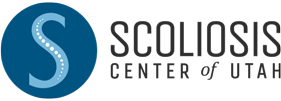Scoliosis
Adolescent Scoliosis
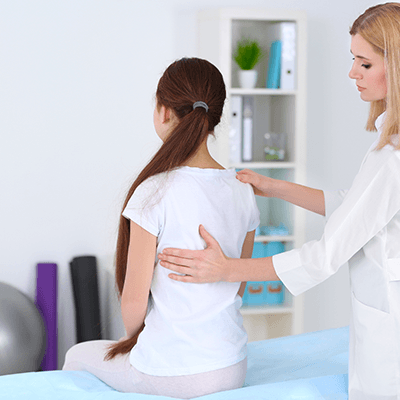
At the Scoliosis Center of Utah, we understand the challenges adolescents face when diagnosed with scoliosis. Our dedicated team is committed to providing comprehensive care tailored to each individual, offering advanced treatments to help manage and correct scoliosis effectively.
With a focus on corrective care and utilizing cutting-edge technologies such as the ScoliBrace scoliosis bracing system, a custom-made 3D brace that aims to correct and reverse the scoliotic curves.
What is Adolescent Scoliosis?
Adolescent scoliosis is a spinal condition characterized by an abnormal sideways curvature of the spine that typically develops during puberty. While the exact cause of scoliosis is often unknown, factors such as genetics, growth spurts, and neuromuscular conditions may contribute to its development. Without proper treatment by a scoliosis specialist such as Dr. Katalina Dean, scoliosis can progress and potentially lead to pain, discomfort, and even respiratory issues in future years.
Comprehensive Care Tailored to You
At the Scoliosis Center of Utah, we prioritize personalized care for every patient. Our experienced team of chiropractors, physical therapists, and ScoliBrace experts conduct a thorough exam and evaluations, digital x-rays, and posture analysis software to assess the severity and progression of each individual’s scoliosis.
This will help us understand and better develop a customized treatment plan suited to the patient’s unique needs. We believe in empowering our patients with knowledge and support throughout their journey to optimal spinal health.
Advanced Treatment Options
As part of our commitment to excellence, we offer a range of advanced treatment options for adolescent scoliosis, including the innovative ScoliBrace scoliosis bracing system. Designed to be worn comfortably under clothing, the ScoliBrace is a dynamic orthotic device that aims to correct spinal curvature while allowing for freedom of movement. By utilizing state-of-the-art technology and evidence-based practices, we strive to achieve optimal outcomes for our patients.
Why Choose the Scoliosis Center of Utah?
- Experienced and compassionate team dedicated to adolescent scoliosis care.
- Personalized treatment plans tailored to each individual’s needs and goals.
- Utilization of advanced technologies such as the ScoliBrace scoliosis bracing system.
- Comprehensive support and education for patients and their families throughout treatment.
- Commitment to holistic wellness and long-term spinal health.
If you or your loved one is struggling with adolescent scoliosis, don’t hesitate to reach out to the experts at the Scoliosis Center of Utah. Our compassionate team is here to provide the guidance and support you need to effectively manage scoliosis and achieve a healthier, happier life. Contact us today to schedule your consultation and take the first step towards a brighter tomorrow.
Non Invasive
Safe & Effective
No Downtime
Types of Scoliosis

Infantile Scoliosis
Infantile scoliosis is rare, affecting children younger than 3 years of age. It begins to develop in the first 6 months of life. Like other types of scoliosis, it is characterized by an abnormal sideways S or C curve of the spine. Sometimes, It can resolve spontaneously; however, it often progresses to a more severe form of scoliosis. Treatment may involve observation, specific exercises, bracing, and, as a last resort, surgery.
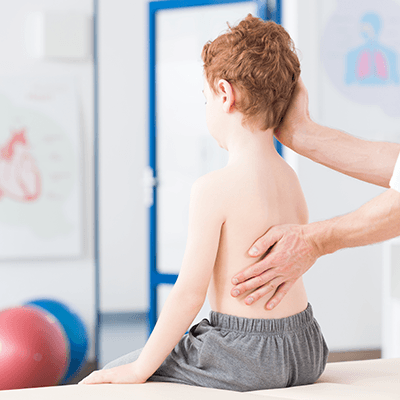
Juvenile Scoliosis
Juvenile scoliosis affects children between ages three and nine. It’s characterized by the hallmark abnormal sideways S or C curve of the spine. Girls tend to be more susceptible to the condition than boys, and curves tend to bend more often to the right. Interestingly, curves to the left tend to have a better prognosis.
Children with juvenile scoliosis generally have a high risk of progression. Seven out of 10 children with this condition will require active treatment to mitigate its severity and associated risks. Treatment usually requires bracing, and many cases require some form of surgery. Early detection and proper management are recommended for the best outcome.

Adolescence Scoliosis
Adolescent scoliosis affects adolescents and young adults. It’s typically diagnosed by puberty and is more easily diagnosed in girls than boys. Children with adolescent scoliosis tend to be generally healthy outside of posture issues.
This condition has a better prognosis than juvenile scoliosis, but can still progress to a significant deformity if not detected early and properly managed. It is not uncommon for untreated cases of adolescent to escalate into chronic back pain and mobility issues.
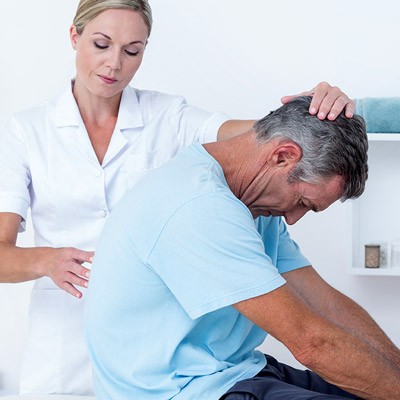
Adult Scoliosis
There are two types of adult scoliosis: Pre-existing, untreated adolescent scoliosis (Adolescent Scoliosis in Adults, or ASA), and the development of scoliosis as a result of spinal degeneration (Degenerative De-Novo Scoliosis or DDS).
Adults with ASA may have a previously diagnosed form of adolescent scoliosis. ASA may be progressive or stable, depending on the individual case. With a previous diagnosis, monitoring progression is easy through the comparison of current X-rays and adolescent X-rays. In situations where scoliosis is discovered in adulthood, determining a pre-existing adolescent condition can be difficult.
DDS usually develops in middle-aged and older adults, typically diagnosed around age 45 or older. Because DDS results from degenerative instability, it’s almost always progressive. The most common symptom is chronic lower back pain. Treatment for Adults may involve, bracing, specific exercises, and chiropractic adjustments.
Contact Scoliosis Center Of Utah today, our experts will give you the best advice.
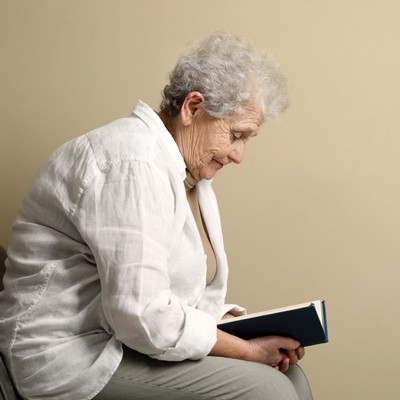
Elderly Scoliosis
Approximately two-thirds of the elderly population experience scoliosis, with pain often accompanying this condition in older patients. Adult Scoliosis, also known as Adult-Onset Scoliosis, differs from Adolescent Idiopathic Scoliosis. It manifests as a degenerative curvature of the spine, primarily due to the degeneration of spinal joints.
Typically emerging in individuals over the age of 65, this type of scoliosis affects a larger portion of the spine, extending to the neck region. Usually presenting as a C-shaped curve in the lumbar spine, it is often linked to spinal degeneration, medically termed Spondylosis. Factors contributing to this condition include the weakening of spinal ligaments and soft tissues, alongside the development of bone spurs, resulting in abnormal spinal curvature.
Additionally, osteoporosis, vertebral compression fractures, and disc degeneration can exacerbate adult-onset scoliosis. Spinal tumors, such as osteoid osteoma, also represent potential culprits, inducing pain and prompting individuals to lean to one side to alleviate pressure, thereby contributing to spinal deformity. Degenerative scoliosis stands as the predominant form of scoliosis observed in adult populations.
Do You Qualify for Care?
Schedule an Appointment Below
